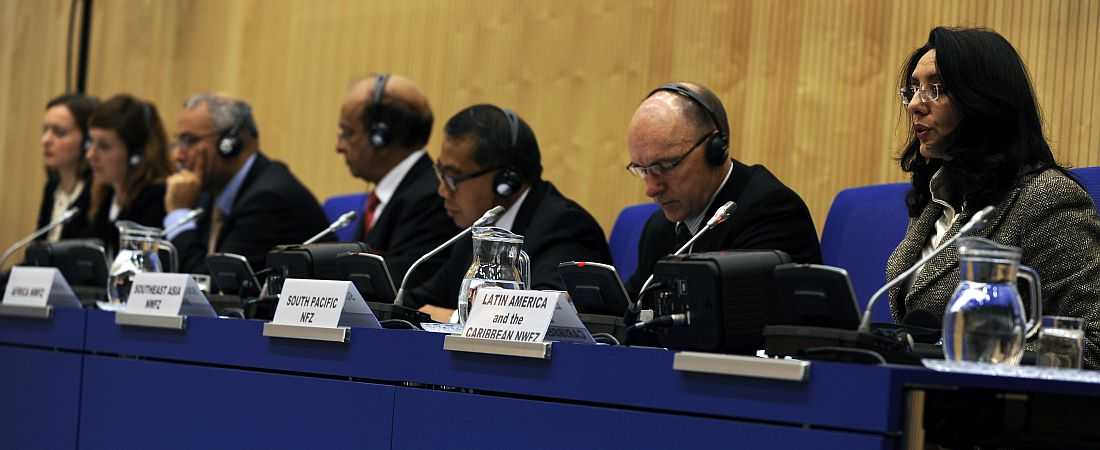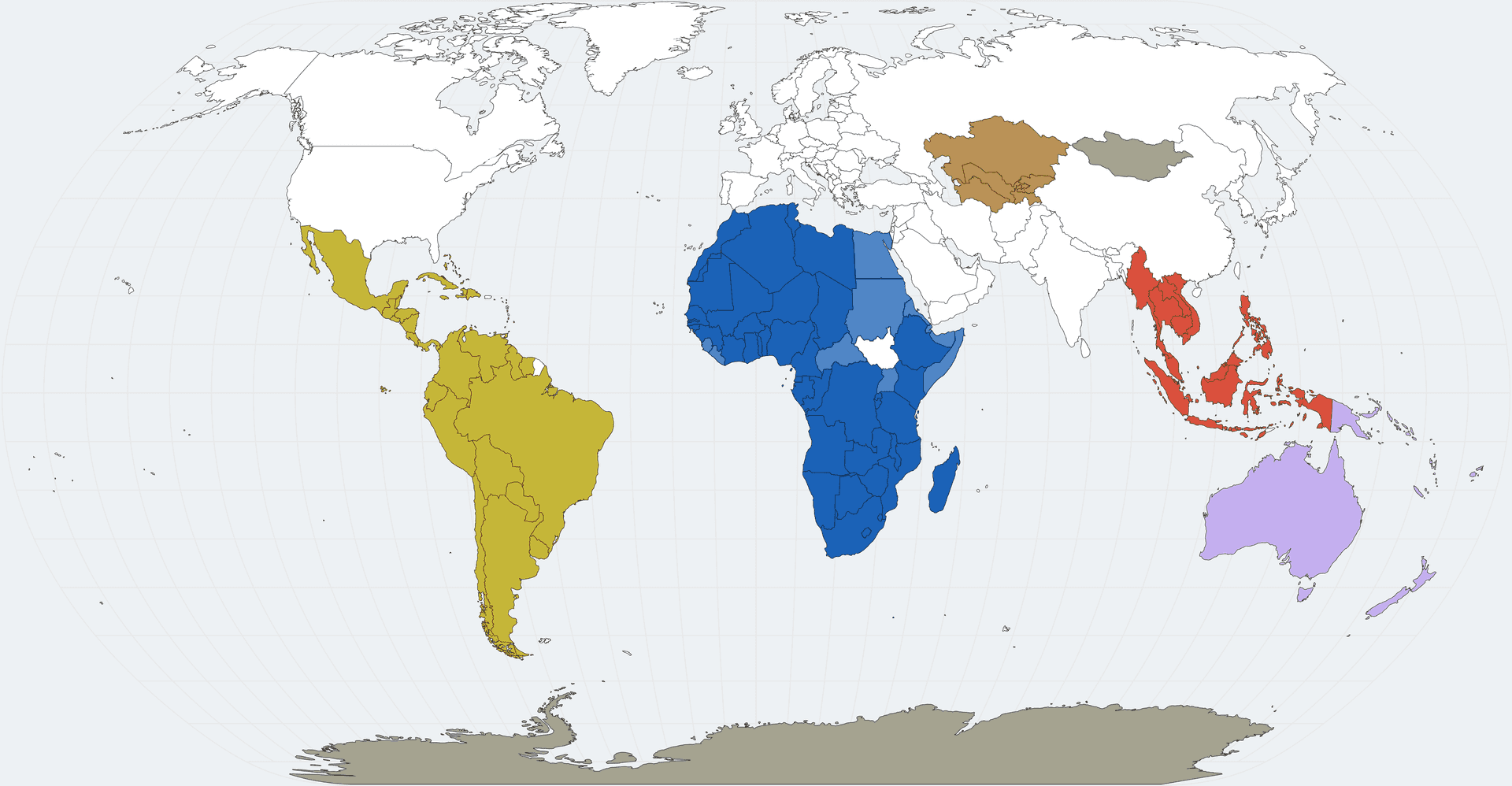Common Elements of NWFZs

Even though we will see later that there were also individual reasons behind the establishment of each NWFZ and that each is unique, they all have a common reference: the Non-Proliferation Treaty (Treaty on the Non-proliferation of Nuclear Weapons, NPT) from 1968 (see Learning Unit 05 for more information).
Article VII of the NPT states:
Nothing in this Treaty affects the right of any group of States to conclude regional treaties in order to assure the total absence of nuclear weapons in their respective territories.
THE TREATY ON THE NON-PROLIFERATION OF NUCLEAR WEAPONS (NPT)
It is therefore important to understand how the logic of the NPT and the logic of a NWFZ are related.
In addition to these principles, each zone has unique characteristics, based on the historic, geographic and political circumstances. As these treaties involve a limited number of states, the complexity is substantially reduced and the treaties are tailored to the particular needs of the region.
The individual NWFZs: Individualities and specialities
| TLATELOCO (1967) Latin America and the Caribbean | RAROTONGA (1986) South Pacific | Bangkok (1995) Southeast Asia | Pelindaba (1996) Africa | Semipalatinsk (2006) Central Asia | |
|---|---|---|---|---|---|
| Peaceful uses | Allowed | Allowed | Allowed | Allowed | Allowed |
| Prohibitions | testing, use, manufacture, production or acquisition + receipt, storage, installation, deployment and any form of possession | Manufacture or otherwise acquire, possess or have control + seek or receive any assistance in the manufacture or acquisition | Develop, manufacture or otherwise acquire, possess or have control over + station, transport, test or use | Conduct research on, develop, manufacture, stockpile, acquire, possess or have control over + seek/receive or grant assistance | Conduct research on, develop, manufacture, stockpile, acquire, possess or have control over + seek/receive or grant assistance + stationing |
| Testing | PNEs are allowed | No testing of any NEDs | No testing of any NEDs | No testing of any NEDs | No testing of any NEDs |
| Stationing | Prohibited | Prohibited | Prohibited | Prohibited | Prohibited |
| Dumping / disposal of radioactive waste | ------------------ | Prohibited | Prohibited | Prohibited | Prohibited |
| Transit | Left to the discretion of the states | Left to the discretion of the states | Left to the discretion of the states | Left to the discretion of the states | Left to the discretion of the states |
| Providing nuclear material | --------- | Linked to IAEA safeguards | Linked to IAEA safeguards | Linked to IAEA safeguards | Linked to IAEA safeguards |
| Nuclear safety / physical protection | ---------- | --------- | Nuclear safety: IAEA guidelines and standards | Physical protection: apply equivalent measures to CPPNM | Physical protection: ratify the CPPNM |
| Other features | Continental shelves and EEZS included, Accession to CENNA, Remedial measures | Reversal of nuclear weapons programs, Prohibits armed attack against nuclear installations | Environmental rehabilitation of contaminated territories | ||
| Verification | IAEA safeguards, OPANAL | IAEA safeguards | IAEA safeguards, Commission for the SEANWFZ | IAEA safeguards, AFCONE | IAEA safeguards, Additional protocol |
Treaty for the Prohibition of Nuclear Weapons in Latin America (Tlatelolco Treaty)
Tlatelolco basic facts
- Opened for signature: 1967
- Entry into force: 1969
- Member states: 33
- Extraterritorial states with obligations: the US, the UK, France, Russia, China and the Netherlands
- Exact delineation: ‘territorial sea, air space and any other space over which the State exercises sovereignty in accordance with its own legislation’
- Nuclear weapon: ‘is any device which is capable of releasing nuclear energy in an uncontrolled manner and which has a group of characteristics that are appropriate for use for warlike purposes’
- Obligation for an indefinite period
- Significance:
- The first treaty to establish a NWFZ on inhabited areas → provides a pattern, and sets the most important elements of any similar treaty
Main obligations
- Peaceful uses: ‘Nothing in the provisions of this Treaty shall prejudice the rights of the Contracting Parties, in conformity with this Treaty, to use nuclear energy for peaceful purposes, in particular for their economic development and social progress’
- Prohibitions: ‘undertake to use exclusively for peaceful purposes the nuclear material and facilities which are under their jurisdiction’; Prohibit / prevent in their territories: ‘testing, use, manufacture, production or acquisition by any means whatsoever of any NW’ + ‘receipt, storage, installation, deployment and any form of possession of any NW’; Refrain from engaging in, encouraging or authorizing, directly or indirectly, or in any way participating in: testing, use, manufacture, production, possession or control of any NW’
- Control system: Agency for the Prohibition of Nuclear Weapons in Latin America and the Caribbean (OPANAL)
- Compliance: IAEA safeguards, reports to OPANAL + IAEA
- Protocols: Protocol I: extra-regional states with territories in the region; Protocol II: negative security assurance of NWSs
